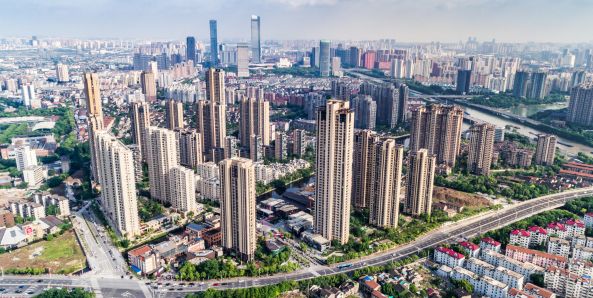

The real estate sector and infrastructure development in India share a close relationship, both being booming industries. The expansion of roads, airports, and metro systems across the country significantly affects the demand, value, and growth of real estate in specific areas. This symbiotic relationship between infrastructure development and real estate expansion creates a continuous cycle of growth and development in various regions.
Improved infrastructure not only amplifies demand for residential properties in well-connected areas but also benefits commercial properties, including offices, retail spaces, and warehouses. Infrastructure projects, functioning as catalysts for real estate growth, elevate connectivity and attractiveness in regions, thus driving demand and value.
In India, the impact of infrastructure on real estate expansion is evident, and Mumbai is currently undergoing several transformational programs aimed at reshaping the city’s landscape. To provide an overview of key real estate projects and their potential impact on the industry, here are some projects:
Mumbai Trans Harbour Sea Link (MTHL)
The Mumbai Trans Harbour Sea Link (MTHL) named the Atal Bihari Vajpayee Sewri Nhava Sheva Atal Setu, is a monumental freeway bridge covering a distance of 21.8 km with 16.5 km over the sea, linking Mumbai to Navi Mumbai. Prime Minister Narendra Modi, inaugurated the six-lane Atal Setu. It is anticipated to accommodate over 70,000 vehicles daily. This infrastructure marvel is elevating real estate prospects in the region by connecting the eastern suburbs to mainland Mumbai, reducing travel time from Churchgate to Navi Mumbai to just 20 minutes. As the project progresses areas like Panvel in Navi Mumbai are expected to experience a rise in property values, attracting homebuyers and investors alike.
Sewri-Worli Connector Project
The Sewri-Worli Connector project in Mumbai stands as a crucial four-lane elevated road covering 4.5 kilometres, with an estimated cost of 1286 crore rupees. This infrastructure endeavour primarily aims to ease 15-20% of traffic from the Mumbai Trans Harbor Link (MTHL), fostering seamless connectivity between the eastern and western parts of the city. As an integral part of the larger MTHL project, it not only enhances transportation efficiency but also benefits over 35,000 motorists daily by reducing congestion. By connecting Sewri to the Bandra Worli Sea Link and the upcoming coastal road, the project offers a signal-free route, contributing to a 15% decrease in vehicular traffic.
Coastal Road Project
The Coastal Road Project in Mumbai is an ambitious initiative aiming to create India’s first undersea road tunnel. This 8-lane expressway plans to connect Marine Drive to the BandraWorli sea link’s Worli end, covering an extensive 22-km stretch. With an estimated cost of 12,000 crores, the project seeks to substantially reduce travel time from the western suburbs to South Mumbai, transforming a 2-hour journey into a mere 40 minutes. Developed in two phases, the project includes a 10-km section from Marine Lines to BKC in the first phase, with the second phase involving the construction of the VersovaBandra sea link.
Mumbai Metro And Its Diverse Lines
The Mumbai Metro, distinguished by its diverse lines, each designated by a distinct colour code, plays a pivotal role in transforming public transportation in the city. The extensive network spans key areas such as Versova, Andheri, Ghatkopar, Dahisar, DN Nagar, Cuffe Parade, BKC, SEEPZ, Aarey Colony, and more. As a comprehensive and efficient mode of transportation, the Mumbai Metro is expected to enhance connectivity and accessibility across different parts of the city. Properties situated in proximity to metro stations are likely to witness increased demand due to improved accessibility.
Navi Mumbai International Airport
The D B Patil International Airport, also known as the Navi Mumbai International Airport, is not just an aviation hub; it signifies a game-changer for Navi Mumbai’s overall development. With a focus on boosting connectivity, this airport is poised to transform the region’s transportation facilities, leading to significant growth in the property market. The Navi Mumbai aerotropolis envisioned around the airport will create a complete ecosystem, incorporating offices, shops, educational centres, and medical facilities. The airport’s potential is expected to drive housing demand, attracting multinational companies to set up offices and making Mumbai the first city in India with more than one airport. Currently under construction, Phase I is anticipated to handle 10 million passengers annually, generating over 4 lakh jobs in Navi Mumbai. Exciting times lie ahead for real estate in Navi Mumbai.
Connect with The Guardians Real Estate Advisory for expert guidance in navigating the real estate market. With their experience in land development and residential property management, they can help you unlock great homes with top-notch amenities. As infrastructure projects progress, witness the continued growth of real estate, contributing significantly to the country’s development. Explore more on The Guardians website or schedule a consultation with their experts.